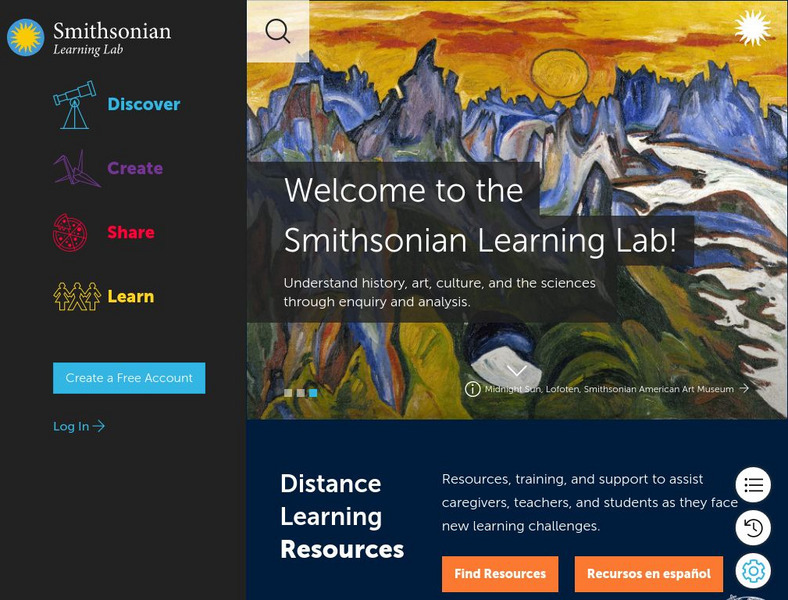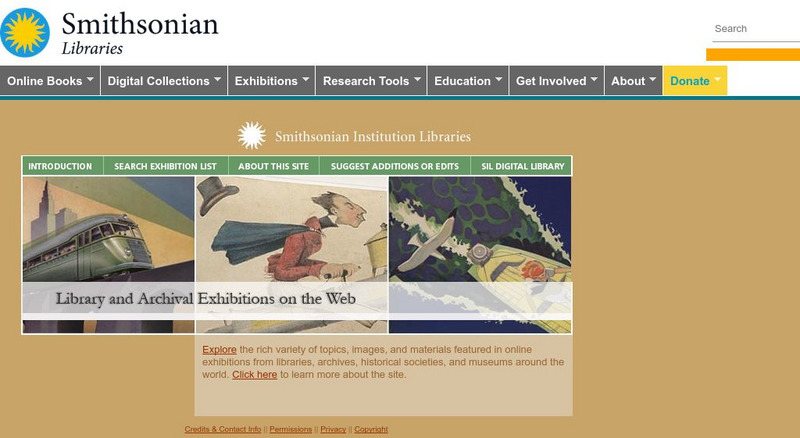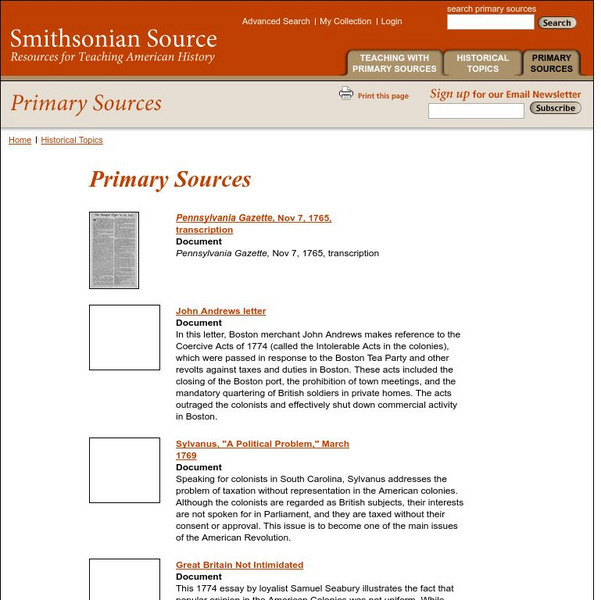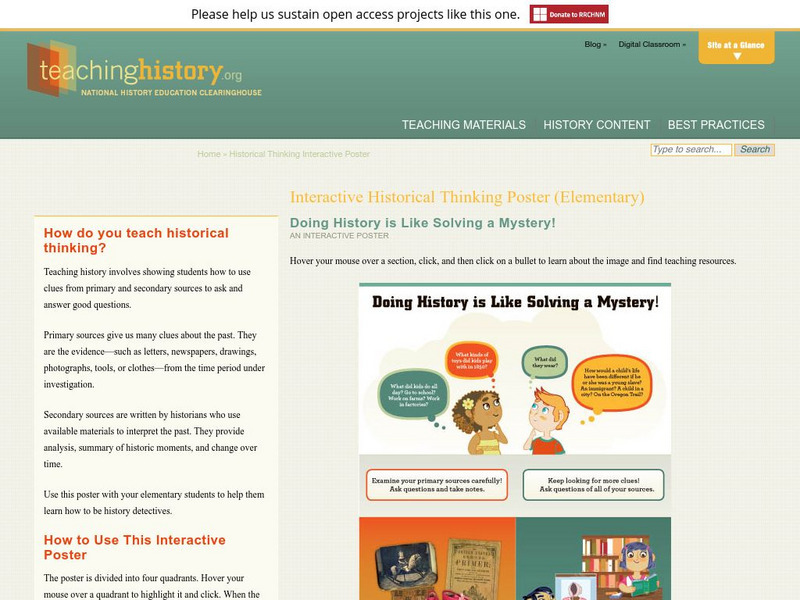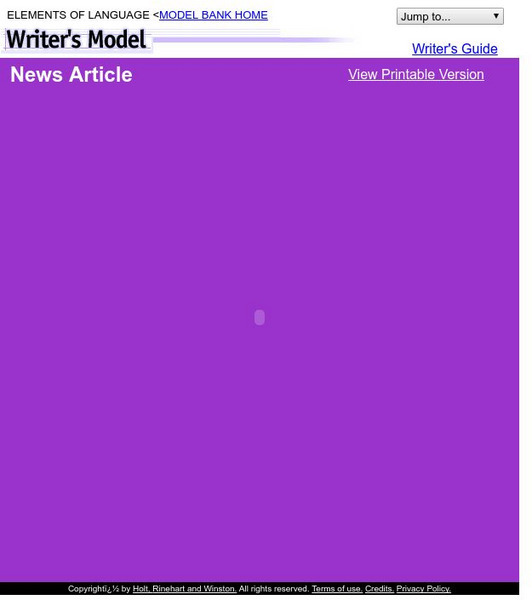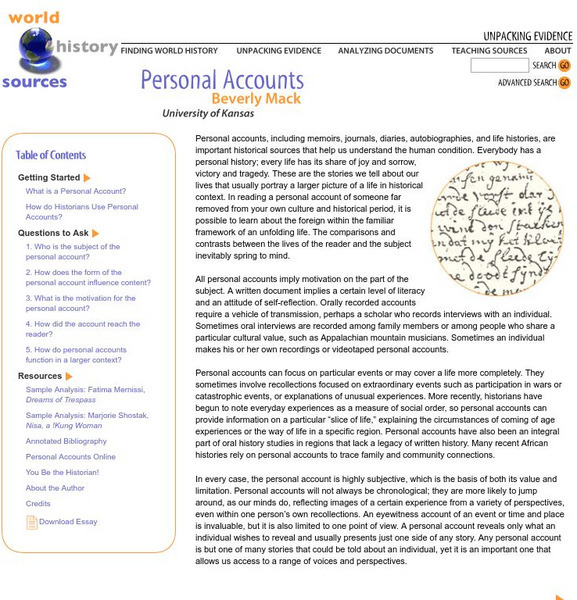Smithsonian Institution
Smithsonian Learning Lab: Teaching With Primary Sources
Five lesson plans, complete with videos, primary sources, and document-based questions (DBQ) to encourage students to utilize primary sources and incorporate thinking and writing into daily learning. Topics include: Artifact &...
Other
Using Sources Effectively
This site provides hints and guidelines on how to effectively use sources.
Lumen Learning
Lumen: Building Credibility Through Source Integration
Well-integrated sources build credibility in several ways: Source material adds evidence and support to your argument, the signal phrase highlights the reputation and qualifications of the source, and effective citation makes it easy for...
Other
Oslis: Research Process
Excellent site outlining each step for Internet research for grades 6-12. This site focuses on writing a research paper from selecting a topic through to the final paper. Click on Cite My Sources to get the electronic citation machines....
NBC
Nbc Learn
NBC Learn, the educational arm of NBC News, is dedicated to making historic stories, images, and primary source documents available on-demand to teachers, students, and parents.
Smithsonian Institution
Smithsonian Libraries: Library & Archival Exhibitions on the Web
This index of links offers the opportunity to explore important and interesting topics. Visiting links on the desired topic is most likely to provide primary sources or at least point students in the right direction.
Smithsonian Institution
Smithsonian: Engaging Students With Primary Sources
This reference guide is designed to highlight the benefits of using primary source materials in any classroom and to provide the teacher with practical suggestions and examples of how to do this. It includes a bibliography and links to...
Harry S. Truman Library and Museum
Truman Library & Museum: Incorporating Primary Sources in the Classroom
Students and teachers are given direction in how to work with the primary source materials of the Harry S Truman Presidential Library.
Smithsonian Institution
Smithsonian Source: Resources for Teaching American History: Primary Sources
A varied collection of primary resources from American history. They include portraits, banknotes, artifacts, newspaper items, paintings, and illustrations.
Other
Usa Gov: u.s. History and Historical Documents
Discover highlights from American history, including military events and founding documents.
Roy Rosenzweig Center for History and New Media
Teaching History: Doing History Is Like Solving a Mystery!
Use this interactive poster to explore how students understand history and find resources about teaching historical thinking to students.
Other
The History of the First Ten Newspapers in America
This site contains a brief history of the first ten newspapers printed in colonial America.
Other
History of Alternative Journalism in 20th Century
This site contains a timeline of the history of alternative journalism beginning in 1900. Includes description & brief discusses of various alternative publications.
Other
Portland Community College: Know Your Sources: A Guide to Understanding Sources
When doing research you will come across a lot of information from different types of sources. How do you decide which source to use? From tweets to newspaper articles, this tool provides a brief description of each and breaks down 6...
Arizona State University
Arizona State U.: Research Success for High School Students: Evaluating Sources
A collection of resources for evaluating sources. Topics covered include knowing your sources, assessing whether a source is scholarly, the CRAAP Test (includes chart, worksheet, and website evaluation sheet), and how to identify fake news.
Other
Harvest
Three modules explain what primary sources are; how to find primary sources in the UIUC archives; how to make sense of a primary source document by examining its creator, the context, and purpose of its creation.
Houghton Mifflin Harcourt
Holt, Rinehart and Winston: Writer's Model: News Article Example
This two-page news article includes a left-hand column with pointers on placement of critical features. Clicking on the "Writer's Guide" link in the upper right-hand corner of the page enables the user to get tips, directions, and...
George Mason University
George Mason University: World History Sources: Material Culture: Images
Investigate the meaning of different cultures' images and materials. Learn to examine different questions such as what is the image, what is the meaning, what is the function, and what is the social condition.
George Mason University
George Mason University: World History Sources: Newspapers
Discover how historians use newspapers and learn about the development of the modern newspaper. Get answers to many questions about different newspapers.
George Mason University
George Mason University: World History Sources: Official Documents
A guide to dissecting official documents. Learn how to find the author of documents, the primary audience, and other important information.
George Mason University
George Mason University: World History Sources: Personal Accounts
Discover how journals, memoirs, diaries, and autobiographies are important historical sources. Learn how historians use these personal accounts and get other questions answered.
George Mason University
George Mason University: World History Sources: Travel Narratives
Learn about the importance of travel accounts to history. Discover how the observations and experiences of travelers can play important parts in history.
Library of Congress
Loc: Primary Source Investigation
Choose from a list of photos from the Civil War, Reform, Harlem Renaissance, and Campaign to study and record observations.
George Mason University
Chnm: Children & Youth History
"Children & Youth in History is a world history resource that provides teachers and students with access to sources about young people from the past to the present."
